- News
- Reviews
- Bikes
- Accessories
- Accessories - misc
- Computer mounts
- Bags
- Bar ends
- Bike bags & cases
- Bottle cages
- Bottles
- Cameras
- Car racks
- Child seats
- Computers
- Glasses
- GPS units
- Helmets
- Lights - front
- Lights - rear
- Lights - sets
- Locks
- Mirrors
- Mudguards
- Racks
- Pumps & CO2 inflators
- Puncture kits
- Reflectives
- Smart watches
- Stands and racks
- Trailers
- Clothing
- Components
- Bar tape & grips
- Bottom brackets
- Brake & gear cables
- Brake & STI levers
- Brake pads & spares
- Brakes
- Cassettes & freewheels
- Chains
- Chainsets & chainrings
- Derailleurs - front
- Derailleurs - rear
- Forks
- Gear levers & shifters
- Groupsets
- Handlebars & extensions
- Headsets
- Hubs
- Inner tubes
- Pedals
- Quick releases & skewers
- Saddles
- Seatposts
- Stems
- Wheels
- Tyres
- Health, fitness and nutrition
- Tools and workshop
- Miscellaneous
- Buyers Guides
- Features
- Forum
- Recommends
- Podcast
review
£1,800.00
VERDICT:
Excellent value for money endurance machine with performance intentions, an awesome sportive-cum-club run bike
Weight:
8,630g
Contact:
At road.cc every product is thoroughly tested for as long as it takes to get a proper insight into how well it works. Our reviewers are experienced cyclists that we trust to be objective. While we strive to ensure that opinions expressed are backed up by facts, reviews are by their nature an informed opinion, not a definitive verdict. We don't intentionally try to break anything (except locks) but we do try to look for weak points in any design. The overall score is not just an average of the other scores: it reflects both a product's function and value – with value determined by how a product compares with items of similar spec, quality, and price.
What the road.cc scores meanGood scores are more common than bad, because fortunately good products are more common than bad.
- Exceptional
- Excellent
- Very Good
- Good
- Quite good
- Average
- Not so good
- Poor
- Bad
- Appalling
The D1 is the top-end model in Eastway's Zener endurance range. It looks great on paper, with a carbon fibre frameset, full Shimano Ultegra groupset, hydraulic disc brakes and Mavic wheels, all for £1800, and that positivity is carried through to the road. The monochrome paintjob doesn't hide a colourful ride.
British brand Eastway may have disappeared off the radar for a bit, but thanks to its acquisition by online retailer Wiggle, it's back for 2016 with a brand new line-up.
The Zener range contains three models, all of which share the same frame and fork, designed to create a fast ride with plenty of comfort. Most endurance frames have shorter top tubes and a taller head tube to give a slightly more upright, relaxed position. The Zener has this, but not to the extremes we see on some.
On our 54cm test model the sloping top tube has a virtual length (measured as if the tube ran horizontally) of 535mm, paired with a head tube of just 140mm. These, when combined with a seat tube angle of 74 degrees and a head tube angle of 72.5, give a stack and reach (the vertical and horizontal measurements from the centre of the bottom bracket to the top of the head tube) of 542mm and 380mm respectively: definitely on the racy side.
The ride
What does all this mean once you get it out on the road? Well, the D1 certainly likes to be ridden hard. It responds well to any input and you certainly feel as if you are getting a decent level of return on your effort.
Acceleration is brisk thanks to the oversized tubes and bottom bracket junction offering heaps of stiffness, especially in the lower half off the frame. You can really grab hold of the bar and whack the power through it for a sprint or short, fast climb.
The steep seat tube places you further forward in relation to the bottom bracket, which opens the hip angle, allowing for greater power transfer without compromising breathing. This means once you've got the Eastway up to speed you can keep it there by tucking into the shallow drops of the handlebar. Told you this thing had performance intentions.
To test the climbing and descending, I rode the Zener D1 on the Sheffield round of our team road.cc rideouts, which took in a loop of the Peak District. The D1 certainly left me impressed, especially considering it was a relatively unfamiliar bike on totally unfamiliar roads.
The long, steep climbs of the Peaks highlighted the stiffness running through the square section down tube and chainstays, connected by that wide BB86-compatible bottom bracket shell. While the D1 responds well to seated climbing, it's when you're out of the saddle that it really shows its true colours. Not a hint of flex anywhere, and with the shorter than normal top tube you can really stand up and stretch your back.
Its 8.63kg (19.03lb) weight doesn't feel relevant when climbing, as the majority of it is in the Mavic Aksium wheels; as long as you keep them spinning, the D1 rides as if it's much lighter than it is.
Once it's time to come down, the Zener has a very surefooted feel, and while the handling isn't razor sharp (changing direction in a high speed chicane, for example, can feel a tiny bit delayed), it is tight thanks to the tapered fork steerer, and well within the expected limits for a bike of this style. The line you aim for tends to be the line you follow, and with plenty of feedback you always know what the Zener is up to beneath you.
The 28mm Continental Ultra Sport tyres offer plenty of grip, easily enough to cope with the braking power of the Shimano hydraulic disc brakes, and they roll pretty well too. For comfort levels you can run these at lower pressures than narrower tyres, which you might well need to because the Zener frame is not the most supple, compared with other similar style framesets running the same tyre sizes and pressures.
Although firm, it does offer a smooth ride; it doesn't resonate or buzz over rough surfaces, so it's not tiring. You know you're hitting the bumps but it's not uncomfortable.
Frame and fork
The frame is full carbon fibre, with internal cable and hose routing for the gears and hydraulic brakes. The fact that Eastway offers a five-year warranty is pleasing to see: it's obviously confident in the longevity of the product.
As I've already mentioned, the head tube is tapered, matching a corresponding fork steerer. The larger diameter at the crown means a stiffer fork, which benefits handling and helps resist braking forces. It also means the junction between the head tube and down tube can be larger than if you were using a 1 1/8in lower race.
At the other end of the down tube you have the BB86 bottom bracket. This uses press-fit bearing cups, allowing the BB shell to be 86mm wide instead of a more traditional 68mm. A larger width here means the down tube can carry that oversize profile from top to bottom, stiffening up the frame.
Out of this come the square chunky chainstays, transferring power to the rear wheel. The chainstays are quite short, considering the type of bike and the added 5mm width of the disc hub (heel clearance can be an issue), but it does mean the rear triangle feels very tight and responsive.
Eastway has stuck with traditional 9mm quick release dropouts, and although some manufacturers are moving to thru-axles when disc brakes are involved, I certainly didn't feel that the Zener suffered in any way.
Finishing kit
This is where the Zener D1 scores particularly well. Shimano's latest 11-speed Ultegra groupset is a beautiful piece of kit, and the direct shifting certainly matches the solid feel of the frame.
The gear ratios are what you'd expect for a bike designed for the sportive scene: a 50/34 chainset with an 11-28 cassette. This offers plenty of options for climbing and top speed work.
The braking is taken care of by the excellent Shimano R785 hydraulic callipers paired with R685 STI units. These aren't groupset specific, but with their carbon levers and light shifting they sit well with the Ultegra derailleurs; you even find them on hydraulic-equipped Dura-Ace-specced bikes.
The hydraulic units bring so much modulation to the braking, wet and dry, and while the rear can be a little lively you soon learn you only need to tickle it a bit with two fingers to bring the bike to a complete stop. With the front you can easily grab a handful without losing traction thanks to the 140mm Ice Tech rotor being bang on performance-wise for road use.
The cockpit and seatpost come from Ritchey's Comp range – quality aluminium pieces whose high gloss finish mates well with the Zener's matt one. The Evo Curve handlebar has a shallow drop which means you can get aero enough to duck out of a headwind even if you aren't that flexible. The minimal effect on your centre of gravity compared with a deeper traditional-drop bar means the handling remains unchanged too.
> For more choices, check out our guide to 2016 sportive and endurance bikes here
A colour matched Fizik Aliante saddle sits atop the seatpost, and very comfortable it is as well. Its shape is suited to long hours in the saddle, while being narrow enough to offer thigh clearance if you want to get low and get the power down.
Wheels and tyres
The marketplace for entry-level disc brake-compatible wheelsets is increasing rapidly, but choices are still pretty limited to just a few brands. Eastway's decision to go with the Mavic Aksium Discs ties in with the sensibly priced and high performing branded finishing kit specced on the rest of the Zener. It gives the D1 one a complete look, if you will, like no corners have been cut to hit a budget.
The Aksiums are robust and will stand up to plenty of abuse, so longevity won't be an issue, though the near-2kg weight takes the shine off the Zener's acceleration just a touch. As I mentioned above, though, it isn't a deal breaker because once they're rolling that speed isn't a chore to maintain.
The Continental Ultra Sport tyres did suffer a puncture from a sharp bit of grit, but on the whole they are decent performers, especially for the autumn/winter crossover of the test period.
Conclusion
The Zener D1 is a great all-round bike, with a quality frame at its heart. Its solid and smooth feeling gives you heaps of confidence, and allows you to push a little harder than you might normally. The reward for working hard is paid back in performance, with the tight frame really responding when you get the power down.
Value for money is another big marker for the Eastway. Full Ultegra, hydraulic disc brakes and a full-carbon frameset is impressive for the £1800 price tag, and with the Zener riding as well as it does, it goes to show Wiggle hasn't just tarted it up to disguise a mediocre frame. Everything works well together.
Verdict
Excellent value for money endurance machine with performance intentions, an awesome sportive-cum-club run bike
road.cc test report
Make and model: Eastway Zener D1 Ultegra
Size tested: 54cm
About the bike
State the frame and fork material and method of construction. List the components used to build up the bike.
Front Axle Type: 9mm QR
Cable Routing: Internal
Frame: Eastway Full Carbon Endurance Disc frame
Fork Material: Carbon
Fork: Eastway Full Carbon Endurance Disc fork
Steerer: Tapered
Bottle Cage Mounts: Double
Front Derailleur Mount: Braze On
Dropouts: Replaceable Rear Derailleur Hanger
Wheelset: Mavic Aksium One
Brake Levers/Gear Shifters: Shimano ST-R685
Front Derailleur: Shimano Ultegra
Rear Derailleur: Shimano Ultegra
Brake Type: Hydraulic Disc Brake
Brakes: Shimano ST-R685
Brake Callipers: Shimano BR-R785
Chainset type: Compact
Chainset: Shimano Ultegra
Chainring Size: 50 Tooth, 34 Tooth
Chain: Shimano
Bottom Bracket: Shimano
Cassette: Shimano 11 speed
Cassette Range: 11-28 Tooth
Handlebars: Ritchey Comp Evo curve
Bar Tape/Grips: black
Stem: Ritchey Comp 4-Axis
Seat Post: Ritchey Comp
Saddle: Fizik Aliante
Tyres: Continental UltraSport 700x28c
Tell us what the bike is for, and who it's aimed at. What do the manufacturers say about it? How does that compare to your own feelings about the bike?
Eastway says: "Eastway have looked closely on making the Zener's geometry as comfortable and as fast as possible. So whether you are going out for that quick short hack or that long weekend 100 miler the Zener will make sure that you have completed the ride with pace and ease."
For an endurance bike it is certainly on the racier side thanks to that shorter than usual top tube. A great compromise between speed and comfort even considering the stiff frame.
Frame and fork
Overall rating for frame and fork
8/10
Tell us about the build quality and finish of the frame and fork?
Very nice quality with a simple paintjob. The whole frameset has a solid feel to it with no rattles or creaks.
Tell us about the materials used in the frame and fork?
The frame is a monocoque construction from carbon fibre, laid up in what looks to be a uni-directional formation judging by the naked finish. The fork uses a similar method.
Tell us about the geometry of the frame and fork?
A slightly shorter than normal top tube matched to a pretty standard head tube length, meaning a geometry closer to a race bike than many endurance bikes.
How was the bike in terms of height and reach? How did it compare to other bikes of the same stated size?
Stack to reach ratio comes out at 1.42 highlighting its performance intentions. Geometry tables are here: http://www.wiggle.co.uk/eastway-zener-d1-ultegra-2016/
Riding the bike
Was the bike comfortable to ride? Tell us how you felt about the ride quality.
The Zener is stiff but manages to avoid being overly harsh. Other endurance frames, like the Scott Solace for example, have a more supple ride.
Did the bike feel stiff in the right places? Did any part of the bike feel too stiff or too flexible?
Yes, the Zener certainly has no trouble when you lay the power down.
How did the bike transfer power? Did it feel efficient?
The compact frame and oversized BB86 bottom bracket transfers the power from pedals to road well.
Was there any toe-clip overlap with the front wheel? If so, was it a problem?
A little, but no issue while on the move.
How would you describe the steering? Was it lively, neutral or unresponsive? Competent with loads of feedback, very neutral.
Tell us some more about the handling. How did the bike feel overall? Did it do particular things well or badly?
The neutral handling of the Zener makes it a very easy bike to ride. You get loads of feedback from the road through the frame and fork so you always know what the bike is up to. On longer rides when tiredness can start to kick in this can make a lot of difference – you don't have to make decisions or think about what's happening as having all of that feedback means you just react instinctively.
Which components had the most effect (good or bad) on the bike's comfort? would you recommend any changes?
Swapping from the 31.6mm to a 27.2mm diameter seatpost with a sleeve would bring in a bit more comfort.
Which components had the most effect (good or bad) on the bike's stiffness? would you recommend any changes?
The Ritchey steering components are never found wanting when you need stiffness.
Which components had the most effect (good or bad) on the bike's efficiency? would you recommend any changes?
The powerful hydraulic disc brakes make a huge amount of difference to efficiency, especially in wet weather, as you can leave your braking decisions later which means a greater average speed.
Rate the bike for efficiency of power transfer:
8/10
Rate the bike for acceleration:
7/10
Rate the bike for sprinting:
8/10
Rate the bike for high speed stability:
8/10
Rate the bike for cruising speed stability:
8/10
Rate the bike for low speed stability:
8/10
Rate the bike for flat cornering:
8/10
Rate the bike for cornering on descents:
7/10
Rate the bike for climbing:
8/10
The drivetrain
Rate the drivetrain for performance:
9/10
Rate the drivetrain for durability:
8/10
Rate the drivetrain for weight:
8/10
Rate the drivetrain for value:
7/10
Tell us some more about the drivetrain. Anything you particularly did or didn't like? Any components which didn't work well together?
Shimano Ultegra is a lovely groupset. Performance is noticeably improved over 105, with not much more of an outlay. When paired with the hydraulic levers and disc brake callipers it's a groupset that is hard to beat. Those shifters and calipers are expensive, though (around £460 online including rotors), which takes the shine off it in terms of value.
Wheels and tyres
Rate the wheels and tyres for performance:
7/10
Rate the wheels and tyres for durability:
8/10
Rate the wheels and tyres for weight:
7/10
Rate the wheels and tyres for comfort:
8/10
Rate the wheels and tyres for value:
8/10
Tell us some more about the wheels and tyres.Did they work well in the conditions you encountered? Would you change the wheels or tyres? If so, what for?
The Aksium wheels may be entry level in terms of Mavic's line-up but they are solid performers with excellent reliability; only their weight counts against them really. They do offer good long-term value for money.
Controls
Rate the controls for performance:
8/10
Rate the controls for durability:
8/10
Rate the controls for weight:
8/10
Rate the controls for comfort:
8/10
Rate the controls for value:
8/10
Tell us some more about the controls. Any particularly good or bad components? How would the controls work for larger or smaller riders?
The Ritchey Curve stuff looks much more high end than its price would have you believe. Very good long-term quality and the shallow drop of the handlebar makes it perfect for the majority of riders.
Anything else you want to say about the componentry? Comment on any other components (good or bad)
I am a big fan of the Fizik saddle being specced as standard.
Your summary
Did you enjoy riding the bike? Yes
Would you consider buying the bike? Yes
Would you recommend the bike to a friend? Yes
Rate the bike overall for performance:
8/10
Rate the bike overall for value:
8/10
Use this box to explain your score
The Eastway Zener D1 is a solid bike in the way it's built and the way it rides. It is so easy to live with, anyone of any ability level will get back from it what they put in. It's great to see Eastway has pushed the performance side of the equation as far as it has, as although the riding position is comfortable, you're still getting a bike that offers a spirited ride.
Add that spec sheet to the mix and you've got a great all-round package.
About the tester
Age: 37
I usually ride: Kinesis T2 My best bike is: Mason Definition
I've been riding for: 10-20 years I ride: Every day I would class myself as: Expert
I regularly do the following types of riding: time trialling, commuting, club rides, sportives, fixed/singlespeed
Since writing his first bike review for road.cc back in early 2009 senior product reviewer Stu has tested more than a thousand pieces of kit, and hundreds of bikes.
With an HND in mechanical engineering and previous roles as a CNC programmer/machinist, draughtsman and development engineer (working in new product design) Stu understands what it takes to bring a product to market. A mix of that knowledge combined with his love of road and gravel cycling puts him in the ideal position to put the latest kit through its paces.
He first made the switch to road cycling in 1999, primarily for fitness, but it didn’t take long for his competitive side to take over which led to around ten years as a time triallist and some pretty decent results. These days though riding is more about escapism, keeping the weight off and just enjoying the fact that he gets to ride the latest technology as part of his day job.







































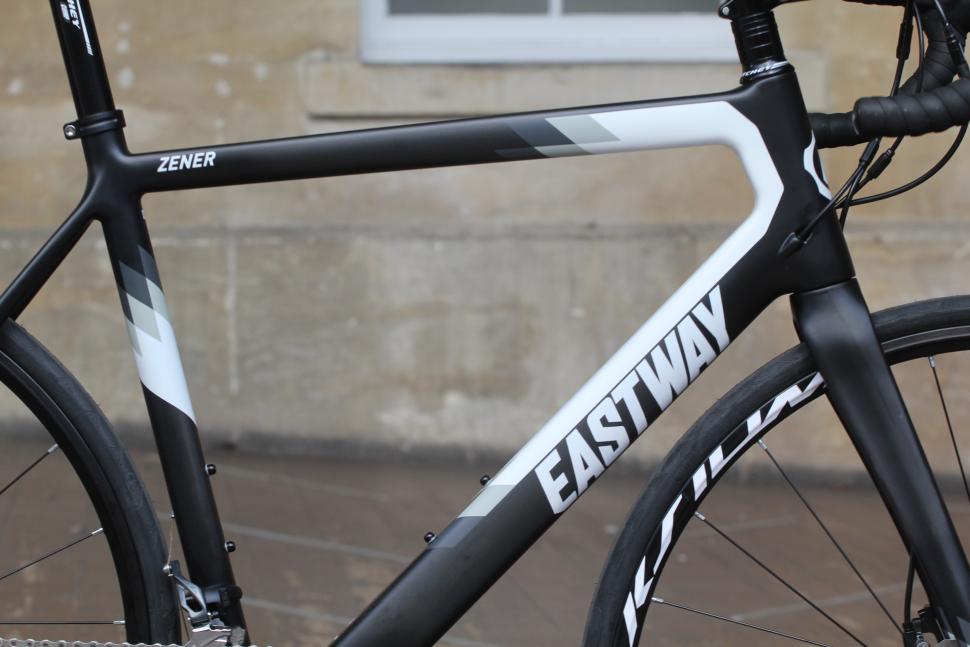
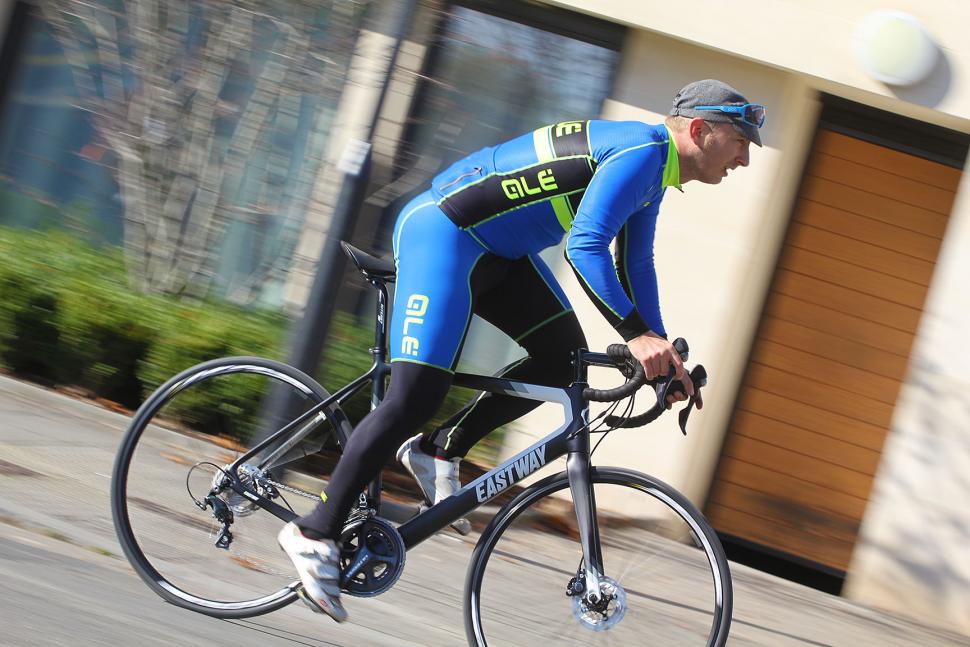
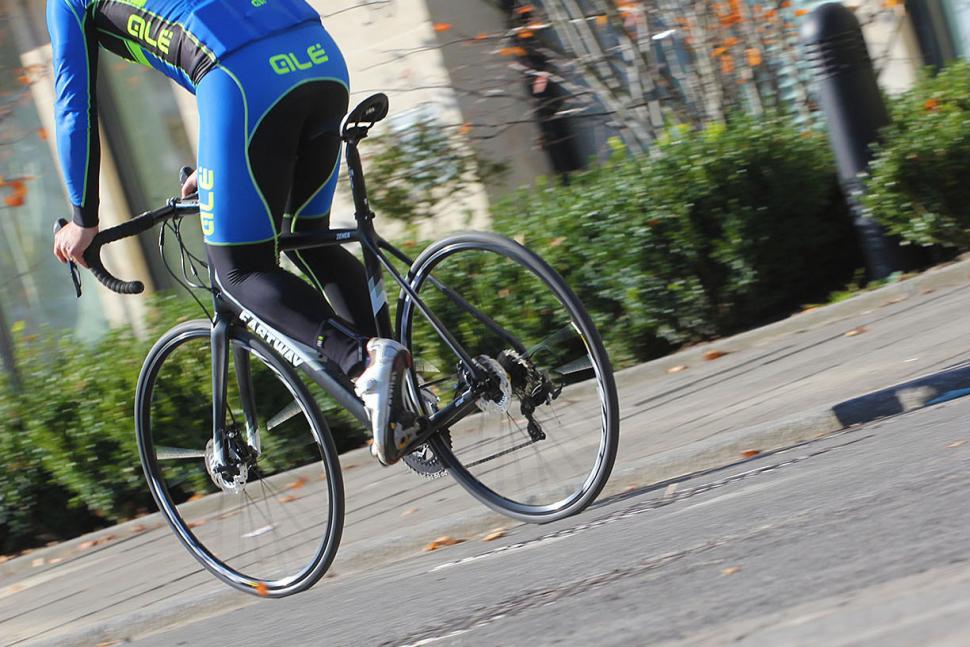



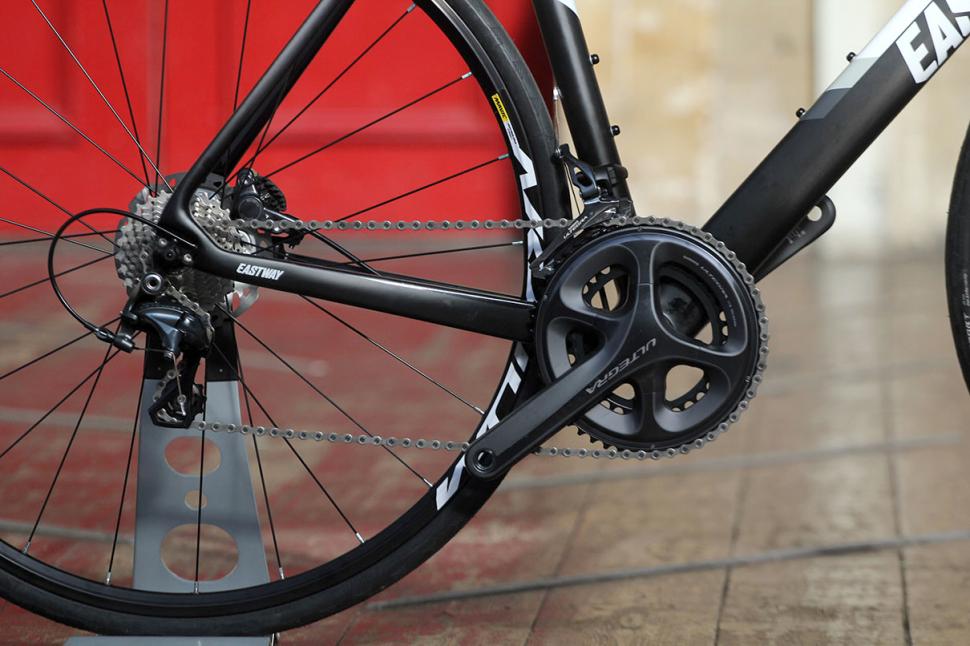

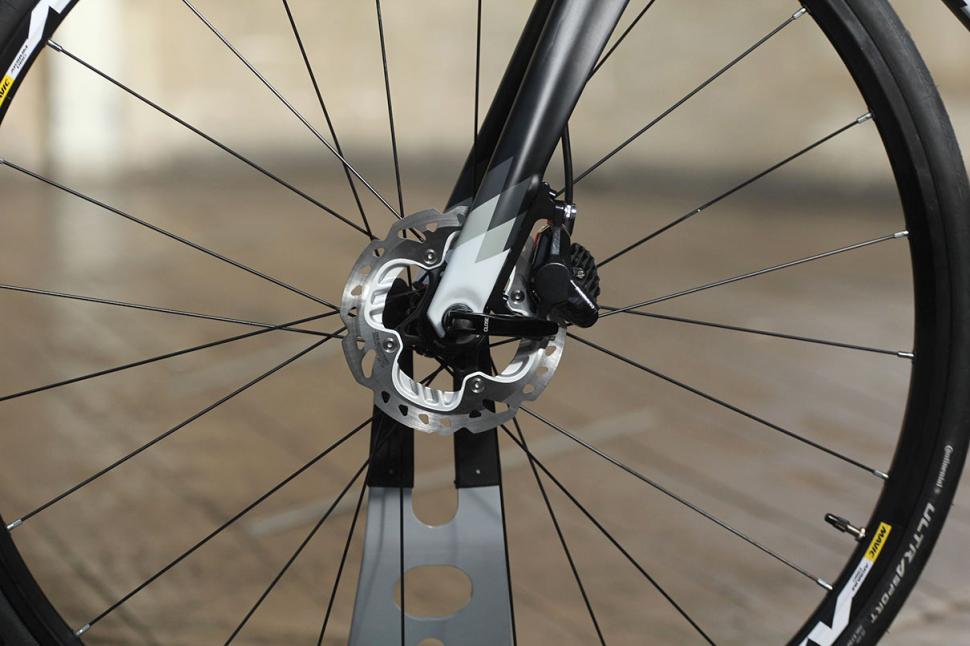

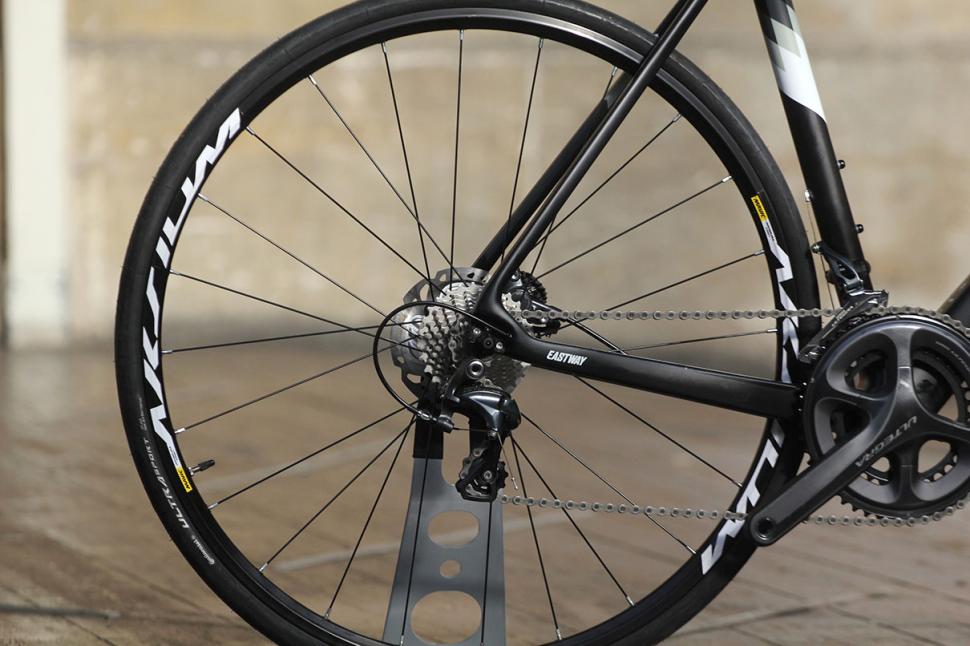


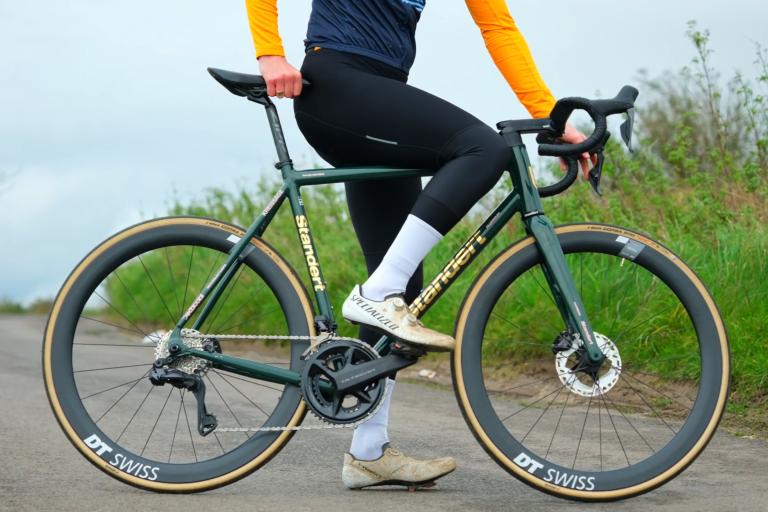
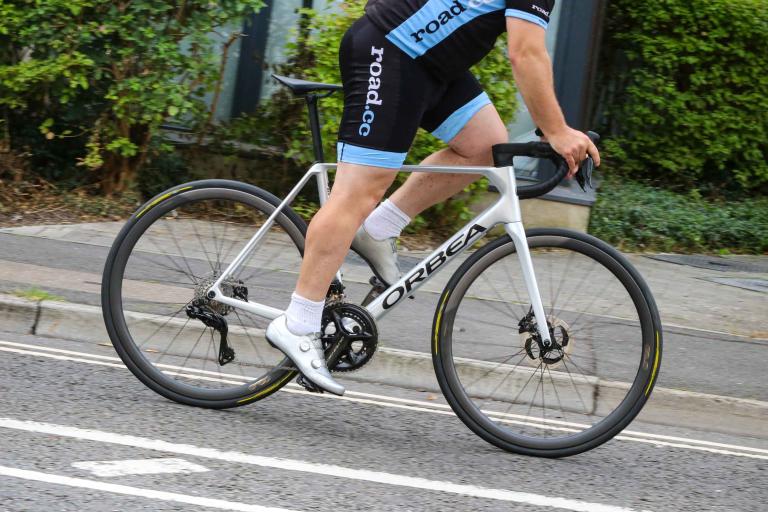
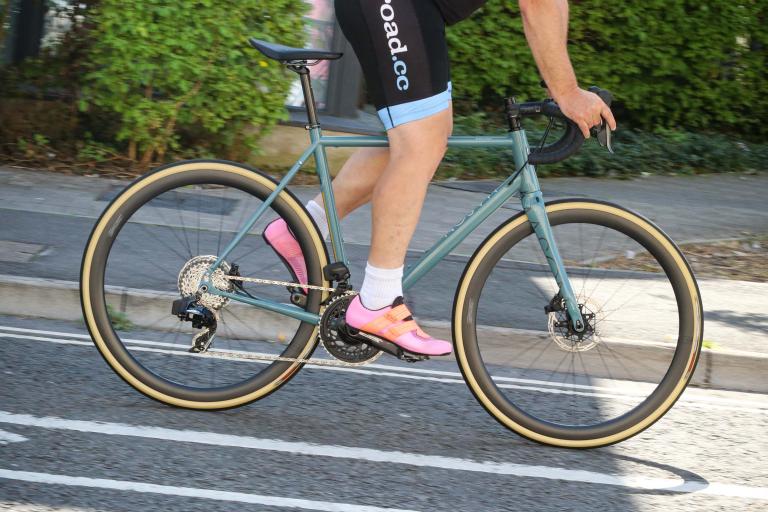
If it’s the same FOI response I saw ( FOI-0538-2425 ), in Richmond Park (local to me so the one I had a good look at in the FOI tables), from 2019...
As an Irish person, I am embarrassed for this guy and the judge. He is clearly a thug, so do not get where he takes pride in wearing the country...
I don't think the fine toilet roll holder is made of an old chainset, looks more like the two biggest rings on a carrier from a cassette, my 9...
🤣🤣🤣
Far be it from me to tell you your business, but if you want to promote your product sneakily on a website without paying for advertising then...
I absolutely stand by my criticism of Elite (note: I'm not criticising the volunteer marshals). They charge an arm and a leg for these events but...
There's a lot of good stuff here, but shoe reviews are still lagging on average when comparing to for example bike or tire reviews. Specs relating...
Loved the Bastion in the flesh but Lemond's bike has the soul. Nice event and met some friends and contacts but like the magazine, it does promote...
All in the article - road tax.
Ah, but: in UK, if a motorist drives into you (or simply parks in a cycle lane, forcing you out into the path of another motorist) then the council...